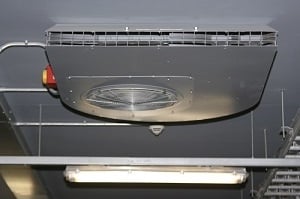The Building Regulations do not advocate energy efficiency in car parks
The regulations applying to ventilation of car parks (at least in England and Wales) do not specifically advocate the conservation of energy, but surely they should do. It does not make sense that while buildings are subject to energy efficiency and low carbon emission targets driven by the Approved Document L of the Building Regulations, car park ventilation has no such requirement.
Moreover, an emphasis on lowest initial cost can mean that there is no consideration of the huge potential costs of running a ventilation system over the lifetime of a car park, and the CO2 emissions associated with this.
Energy efficiency and costs can be cut in several ways
Approved Document F requires that in a typical enclosed car park the fans should provide either 3 or 6 ACH to control build up of vehicle exhaust fumes or spilled petrol fuel when the car park is in general use. But why run fans even at 3 ACH if there are no vehicle movements? ADF also states the maximum averaged CO levels permitted in car parks. So, as long as the CO limits are met, there is no need to run the ventilation system continuously at full duty.
There are several ways to reduce running costs by running the fans at a lower speed or even by switching them off altogether during periods of low car park use. This can be achieved automatically by measuring CO concentrations and varying the ventilation rate to suit:
- Using inverter controls
- Switching parts of the system off
The ErP Directive is coming some way to the rescue
If the Building Regulations are not catching up with the times and not making such energy-reducing measures mandatory, the Energy-related Products (ErP) Directive under Regulation (EU) No. 327/2011 will soon do. It consists of new regulations to help the EU achieve its 20-20-20 target to reduce energy use by 20 per cent and increase the share of renewable energies by 20 per cent by 2020. ErP comes into force from September this year and will set out minimum fan efficiencies for both day-to-day ventilation and smoke fans.
Dual-purpose fans
Dual-purpose fans are popular because of reduced space requirements and installation and maintenance costs, but the ErP will require that they, as all fans, will have to be more energy efficient than hitherto. A key feature of any fan in a high temperature application is higher running clearances, allowing for the expansion of the blade and housing materials under the influence of heat. This makes such dual-purpose fans inefficient when running in day-to-day mode. As a result it might eventually be necessary to have two dedicated fan systems, which is likely to make it easier to achieve higher energy efficiency.
Leaflet - Ventilation systems for car parks, loading bays and service areas
Download the latest version of our leaflet covering ventilation systems for car parks, loading bays and service areas, which brings legislation and standards up to date.
 Conor Logan is a Technical Manager of Colt UK, Smoke and Climate Control Division. Conor designs innovative smoke control and HVAC systems and is also Chairman of the Smoke Control Association.
Conor Logan is a Technical Manager of Colt UK, Smoke and Climate Control Division. Conor designs innovative smoke control and HVAC systems and is also Chairman of the Smoke Control Association.



